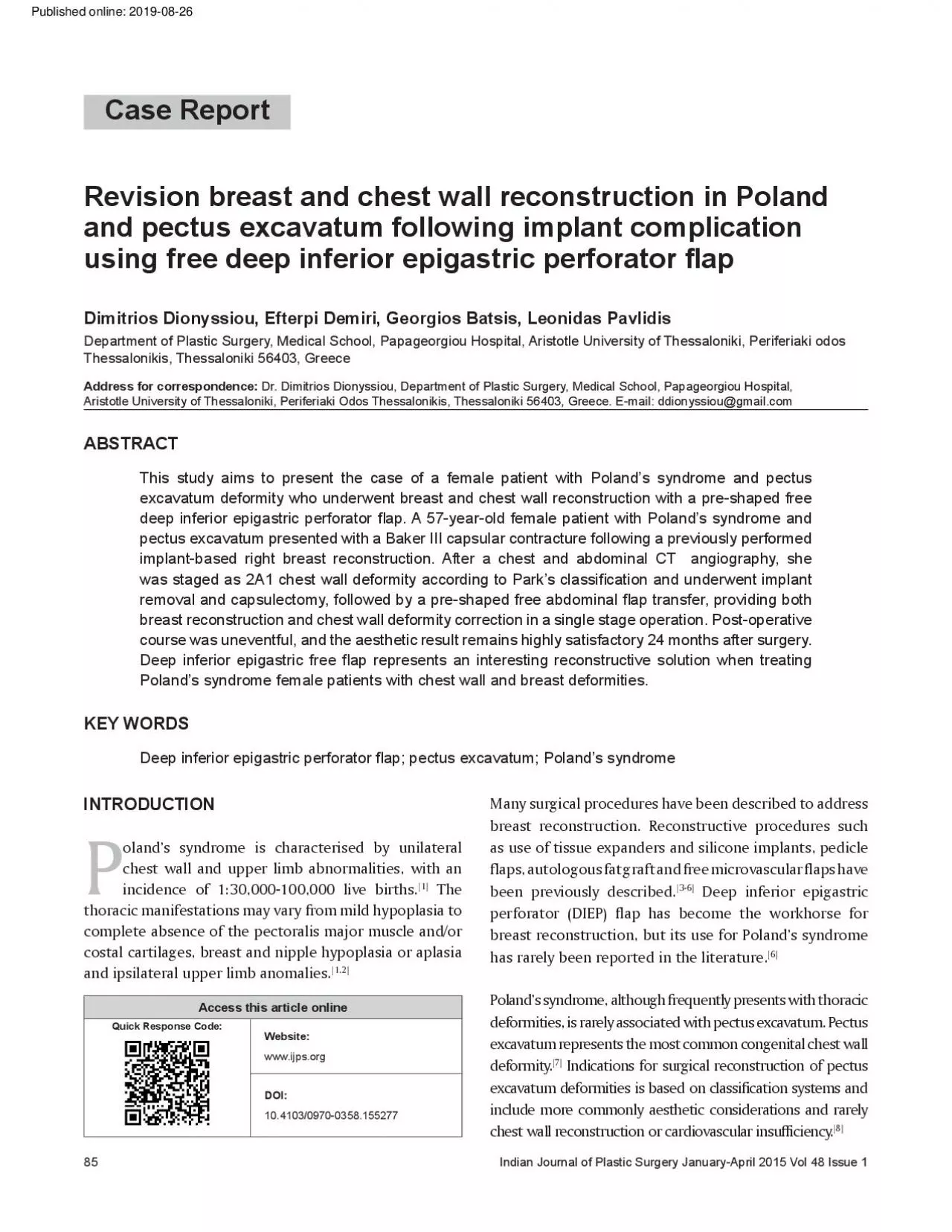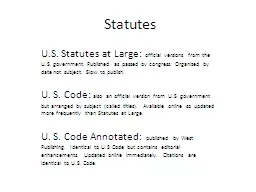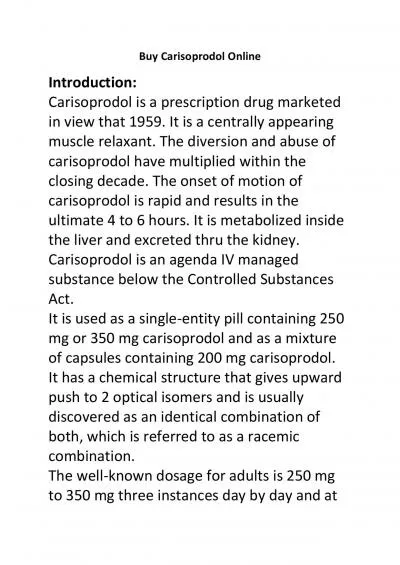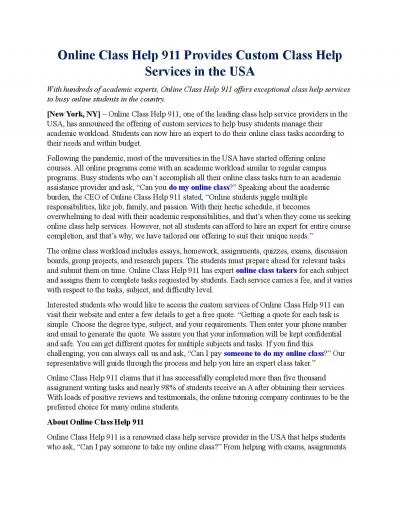PDF-Published online 20190826
Author : elysha | Published Date : 2022-08-19
Indian Journal of Plastic Surgery JanuaryApril 2015 Vol 48 Issue 1oland146s syndrome is characterised by unilateral chest wall and upper limb abnormalities with
Presentation Embed Code
Download Presentation
Download Presentation The PPT/PDF document "Published online 20190826" is the property of its rightful owner. Permission is granted to download and print the materials on this website for personal, non-commercial use only, and to display it on your personal computer provided you do not modify the materials and that you retain all copyright notices contained in the materials. By downloading content from our website, you accept the terms of this agreement.
Published online 20190826: Transcript
Download Rules Of Document
"Published online 20190826"The content belongs to its owner. You may download and print it for personal use, without modification, and keep all copyright notices. By downloading, you agree to these terms.
Related Documents














